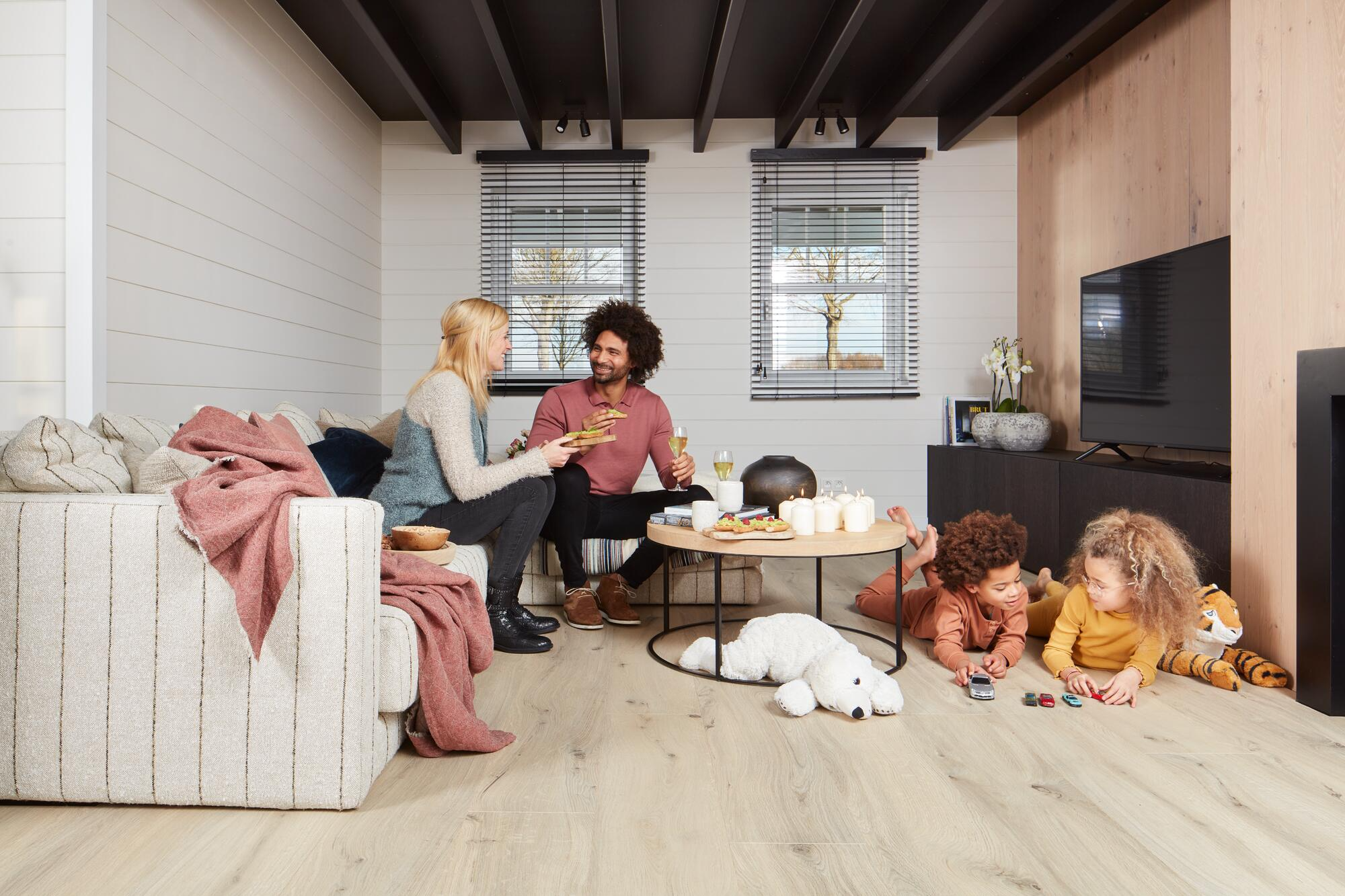If you're looking for durable flooring that's easy to install, you have probably already come across high pressure floors and laminate flooring. And perhaps you're wondering what the differences are.
Similar structure, different level of protection
High pressure floors and laminate flooring share a similar structure: an HDF core made of wood fibre, and a top layer. But their components differ from one another. The HDF core of a high pressure floor features a higher density than a standard laminate floor. This results in better water resistance, as well as better scratch & impact resistance.
The biggest difference can be found in the top layer. In the case of laminate, this layer contains mostly paper and resins in a couple of layers. The top layer of high pressure floors, by contrast, consists of more layers and offers more protective components. They are produced differently as well: manufacturing high pressure floors requires a higher pressure and higher temperatures compared to conventional laminate floors.
Resistance to scratches, dents, and moisture
Maintenance – in terms of regular cleaning and long-term use – plays a key role in choosing your floor too. Even though both options offer a reliable solution, the durability of laminate largely depends on the type of quality you choose. You could, for example, in the kitchen opt for a 100% water-resistant laminate floor.
Due to the extensive production process and the materials used in high pressure floors, our high pressure floors are by default harder, and therefore more resistant to scratches and dents, than laminate. The robust water-resistant top layer protects both the surface and the bevels from water. The product core is fully water resistant as well. Only vinyl and ceramic tiles outperform this type of flooring in terms of water resistance. Thanks to these features, high pressure floors are often the go-to for commercial spaces such as airports and hospitals.
Price differences
When you choose a floor, you take your budget into account too. Because high pressure floors are extremely strong and more costly to make, they are more expensive than laminate flooring. Their price is on par with that of high-quality ceramic tiles.
If you consider the long-term perspective, and that high-pressure floors last longer than laminate, you could actually be saving money over the floor’s lifetime.
Easy to install
The practical click mechanism facilitates easy installation of both flooring options. Do you want to lay the flooring yourself? Laminate flooring offers the more straightforward solution. While high pressure floors allow you to opt for larger planks, which look really nice in spacious rooms, installing them can be a little more challenging because of the bigger proportions. But don’t let this deter you.
Customisable
Perhaps soundproofing and sustainability are important to you as well. In that case, a high pressure floor is the perfect fit for you. It is equipped with an attached sound-absorbing underlay. It’s also designed and made in Norway in an ecologically responsible manner. The raw materials, manufacturing, production and distribution processes have been carefully chosen to protect and respect the environment. When you opt for laminate, you can decide how sustainable and soundproof you would like your flooring to be. Definitely pay attention to the origin, underlay and the materials used to produce your flooring.
What’s the difference between high pressure floors and laminate?
|
High pressure floors |
Laminate |
| Top layer: more protective components | Top layer: paper and resins |
| Higher scratches and impact resistance | Scratch and impact resistant |
| Resistant to water | Resistant to water (drops) |
| More expensive | More budget-friendly |
| Can be challenging to lay on your own | Easy to lay on your own |
Would you like to see and feel laminate flooring and high pressure floors?





.jpg?width=300&name=Overview%20image%20blog%20home_Myfloorstyle_sunset%20boulevard(398x344).jpg)
